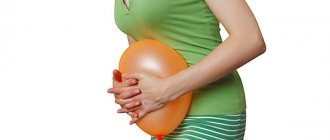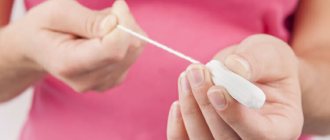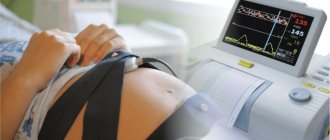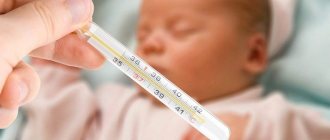Last update: 10/21/2019
The birth of a child is both a difficult and joyful experience associated with a complete restructuring of the body, independent of natural or surgical childbirth. However, the postpartum period after surgery is somewhat more complicated and longer. This also applies to menstruation after a caesarean section, the arrival of which requires special treatment.
- How does the body recover after childbirth?
- What affects the onset of menstruation
- The nature of menstrual flow after surgical delivery
- How to help the body recover
How does the body recover after childbirth?
Caesarean section is a surgical delivery with extraction of the fetus through a uterine incision. It is resorted to when there is a threat to the life of the mother and child, for medical reasons or at the request of the mother in labor. The capabilities of modern medicine minimize the risks to the health of mother and child. Since the abdominal cavity and the anterior wall of the reproductive organ are dissected during the operation, the body has to spend more resources on healing wounded surfaces and restoring strength.
Otherwise, postpartum processes are no different. The onset of menstruation does not depend on the type of birth. When hormonal levels are restored and internal processes are normalized, the first menstruation occurs. It is impossible to predict when this will happen.
What happens in the body of a woman who has given birth and how long does her period last after a cesarean section? The birth of a baby triggers a reverse process, or involution, in the mother’s body. Vital functions acquire their usual rhythm: the uterus contracts and, lowering 1 cm daily, assumes its normal position (as before pregnancy), ovarian functions are restored, and hormone levels are normalized. The procedure for cleansing the reproductive organ lasts about 2 months and is accompanied by bloody discharge called lochia. Shrinking day by day, they indicate proper restoration of the uterus. Moreover, the color and number of lochia may vary depending on the condition of the body.
After a cesarean section, there may be more postpartum discharge: surgical tissue damage briefly prolongs the process of cleansing the uterus.
To speed up recovery and reduce the risk of complications, you need to adhere to the following recommendations:
- empty the bladder in a timely manner, as its overfilling can cause bleeding or delay the healing of the suture;
- maintaining personal hygiene: washing with laundry soap, regularly changing pads;
- Frequent latching of the baby to the breast, stimulating uterine contractions.
The cessation of discharge after childbirth indicates the readiness of the reproductive system and the restoration of the female body, which means the possible onset of menstruation.
Menstruation after cesarean section while breastfeeding
So, let's return to the issue of the relationship between menstruation and lactation. As I always explain to my patients, the female body is entirely dependent on hormones. If we consider such an issue as menstruation after cesarean surgery while breastfeeding, then prolactin rules the roost. The pituitary gland is responsible for its production. In addition, the process involves: the placenta, the immune and nervous systems, and even the mammary glands.
Prolactin affects the body systemically. In particular, it “forces” the mammary glands to grow and produce milk. As a result, less progesterone is produced in the corpus luteum of the ovaries. Ovulation does not occur, and, accordingly, the phases of the menstrual cycle do not change. That is, a woman is infertile during this period.
If we talk specifically about the timing of the arrival of menstruation after a CS, when breastfeeding is present, we can highlight the following:
- In a young mother who actively breastfeeds her baby, regulation may not appear for a long time, up to a year.
- When breastfeeding after cesarean section, menstruation in most cases occurs when the first complementary foods are introduced.
- If the newborn’s diet is mixed, menstruation may make itself felt 3–4 months after delivery.
This is interesting! The more often breastfeeding occurs, the more prolactin is produced. Thus, frequent application of the baby to the breast stimulates the flow of milk.
It's no secret that young mothers are very suspicious and vulnerable to various “information attacks.” And there are plenty of advisers - from experienced grandmothers to the “gurus” of obstetrics and gynecology who fill thematic forums. Thanks to such, not always useful, recommendations, the topic of menstruation after childbirth has become overgrown with a huge number of myths, most of which concern the compatibility of menstruation and feeding. I have prepared rebuttals for the most common ones:
- Myth No. 1: With the arrival of menstruation, milk begins to taste bitter, and the baby may refuse it.
In fact, the taste of milk is in no way determined by the presence or absence of regula. It has its own unique and stable taste, which, moreover, does not particularly depend on the diet of a nursing mother. Undoubtedly, there may be slight changes in the taste of milk. But, firstly, this is not related to menstruation, and secondly, the child cannot react to them in any way.
- Myth No. 2: The onset of menstruation is a signal that it is time to stop breastfeeding.
During the restoration of the cycle, a woman can, or rather, even needs to continue to breastfeed her baby. It is rare, but it happens that in the first few days lactation may decrease, but there is no need to worry - it will recover just as quickly. During the KD period, women often become unreasonably irritable and restless. The baby certainly “reads” these emotions and also begins to be capricious. However, as soon as mommy calms down, the baby also “duplicates” her mood.
- Myth No. 3: During menstruation, the baby will not want to take the breast.
As my experience shows, problems with breastfeeding arise for completely different reasons. For example, when inexperienced parents or caring grandmothers “treat” a newborn with a pacifier, water or formula from a bottle. All these attributes disorient the child, he begins to turn away from the breast. And when this coincides with a certain period of the cycle, mothers immediately find a negative relationship between breastfeeding and menstruation. In reality, both of these processes are natural and coexist quite peacefully in the female body.
Undoubtedly, lactation and regulation depend on each other. As soon as breastfeeding is disrupted, prolactin production decreases. The eggs begin to mature, which leads to ovulation and, as a consequence, the possible arrival of menstruation.
What affects the onset of menstruation
The first postpartum menstruation after cesarean section during natural and surgical delivery occurs at approximately the same time and is associated with many factors. But still, young mothers are very concerned about the fact when menstruation begins after a caesarean section.

A regular menstrual cycle should begin no later than 3 months. after the first postpartum bleeding, but this is a convention. The cycle is restored differently in women. How many months later your period will come depends on many reasons. These include:
- Lactation.
Frequent sucking quickly restores the uterine organ, which is ready for new fertilization within a month. But in reality, things happen differently: breast milk contains more than 20 hormones, one of which, prolactin, reduces the production of progesterone, which affects ovarian function. The breastfeeding body greatly increases the amount of prolactin, which helps to delay menstruation for 6-8 months or more. If there are no periods after cesarean section while breastfeeding on demand, do not worry - this is normal. After six months, pediatricians advise feeding the child. He needs breast milk less, which helps balance hormones, restore the functioning of the ovaries and the arrival of menstruation. If the baby is on mixed feeding from birth, the onset of menstruation after a cesarean section occurs 2 months earlier. With artificial feeding, your critical days should come a month after the operation. - The course of pregnancy. Complications during pregnancy and the difficulties of surgical intervention weaken the mother’s body, requiring a long time for recovery.
- The characteristics of the female body directly affect the speed of postpartum rehabilitation. For example, age: the younger the woman, the faster reproductive functions are restored, as well as the regularity and intensity of the prenatal cycle.
- Lifestyle is also important for normalizing menstruation. Postpartum depression, poor nutrition, and vitamin deficiency can delay monthly bleeding.
- Installation of an intrauterine device, due to the balance of hormones six months after childbirth, accelerates the onset of menstruation. The menstrual cycle after a cesarean section is restored after 3-5 months. first bleeding with a coil.
Considering the above reasons, monthly bleeding after surgery may be absent for up to a year. If you feel well, this is considered normal.
Menstruation after cesarean: when do they come?
Each woman’s body is designed individually, so it is extremely difficult to say when menstruation begins after a caesarean section. How soon menstruation occurs is influenced by many factors, including age, quality of nutrition, the presence of various diseases, rest patterns, pregnancy, and mental well-being.
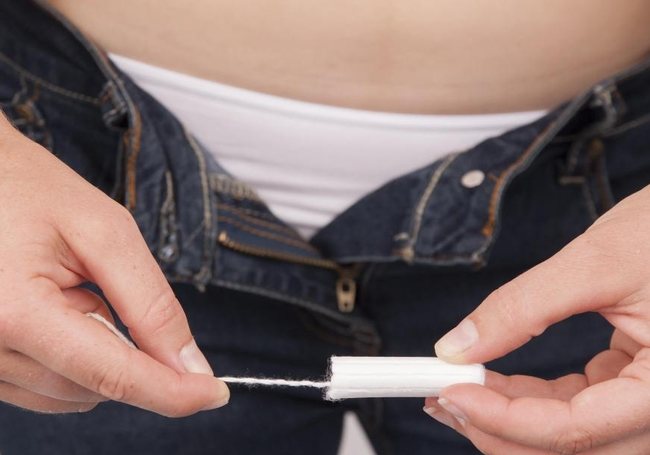
How does breastfeeding affect your periods?
One of the most important factors influencing the onset of menstruation after cesarean section is breastfeeding.
When a woman in labor breastfeeds, her body begins to actively produce a hormone called prolactin. It is he who “conjures” colostrum, turning it into full-fledged breast milk. It is also worth noting that during breastfeeding, this same prolactin “blocks” follicle-stimulating hormone. As long as a woman breastfeeds her baby, ovulation does not occur in her body, which means her period does not come.
Over time, the amount of milk in a new mother decreases significantly, and it becomes necessary to introduce complementary foods to the baby.
It should be noted that at this time prolactin is secreted much less, as a result of which the production of follicle-stimulating hormone increases, which means that a woman’s period after cesarean section during breastfeeding will begin two to three months later.
Often, a woman in labor does not produce breast milk, so she does not breastfeed the baby. Then menstruation after a cesarean section may come in the first month following the cesarean section.
However, this does not mean that your period will start literally right away. Sometimes the body needs to “come to its senses.” This usually takes about two to three months so that the processes occurring before pregnancy can be restored.
If more than three months have passed after a cesarean section and menstruation has not begun, the woman should visit a gynecologist.
How does the age of a woman in labor affect the resumption of menstruation?
How important is the age of a woman who has recently become a mother? It plays a huge role in restoring her reproductive function. If a woman is young and her body is healthy, she will recover much faster.
If a woman is already 30 years old, and her first birth occurred by caesarean section, it will take her much longer to return to normal, and accordingly, her periods will begin much later.
How lifestyle affects the resumption of menstruation
In order for menstruation to recover faster after a cesarean section, and the cycle to become the same, the body needs help. You should definitely reconsider your diet and lifestyle in general. It is recommended to spend more time in the fresh air, rest more often, eat healthy vegetables and fruits to saturate the body with vitamins.
A young mother is forced to rebuild her usual routine and monitor the baby’s needs, but at the same time she needs to take care of herself as much as possible and try to avoid overwork. Otherwise, even minor fatigue and nervousness will affect your psycho-emotional state, which means that the likelihood of hormonal imbalance will increase several times. The result is sometimes very unpredictable: milk production may stop or the onset of menstruation may fail.
The nature of menstrual flow after surgical delivery
When your first period comes after a cesarean section, it is important to observe what the discharge is like. Their nature indicates violations, infection, and improper scarring of the suture.
In the first 2 months, heavy periods are observed. If a woman feels well, this is not considered a pathology and is explained by incomplete restoration of hormonal levels and the state of the body. If intense menstruation lasts longer, then this is a signal of hyperplasia or other pathology. In this case, consultation with a gynecologist is required.
In the first month, the egg does not mature and ovulation does not occur; in subsequent months, the ovaries will completely restore their reproductive functions. Cyclic instability can be diagnosed for 3-4 months, then it acquires prenatal parameters or changes. The main thing is that the cycle lasts 21–35 days, and menstruation lasts from 3 to 7 days. Any deviations from the norm indicate the need for diagnostics and medical consultation.
Signs of concern that may require you to see a doctor include:
- unexpected early cessation of lochia may signal a uterine bend that prevents bleeding;
- scanty monthly discharge indicates insufficient contractility of the reproductive organ, which threatens inflammation;
- irregular cycle after 6 months. after surgery;
- prolonged (more than a week) menstrual bleeding;
- foul-smelling discharge;
- spotting before and after menstruation;
- curdled discharge accompanied by itching;
- frequent bleeding lasting more than 3 cycles.
If a woman discovers these symptoms, she should immediately seek medical help.
Regardless of the course of the critical days, the young mother must undergo the following examinations 1.5 - 2 months after surgical delivery:
- examination by a gynecologist;
- smears from the walls of the uterus;
- Ultrasound examination of the pelvic organs.
A woman should carefully monitor the nature of the bleeding, so that if a pathology is detected, contact a specialist.
Why no period after cesarean section?
Many women panic if they don't have periods for a long time after a caesarean section. The main reasons for the delay include breastfeeding and the characteristics of the mother’s body. Also, the absence of menstruation can be affected by:
- stress;
- wrong lifestyle;
- hormonal disbalance;
- poor and unbalanced diet;
- postpartum complications.
In case of prolonged absence of menstruation, be sure to visit a doctor to rule out the presence of serious illnesses.
How to help the body recover
To resume reproductive functions after a cesarean section, you need to adhere to the following recommendations:
- follow a daily routine, get enough sleep, often walk in the fresh air, do not overload the body;
- adhere to healthy eating rules;
- refrain from intimacy for 2 months after surgery;
- wash in the shower, avoid tampons and douching;
- use contraceptives, since a second pregnancy after surgery is preferably 3 years later.
Listen to your body, doing everything possible for a speedy recovery. Remember that your health is in your hands.

